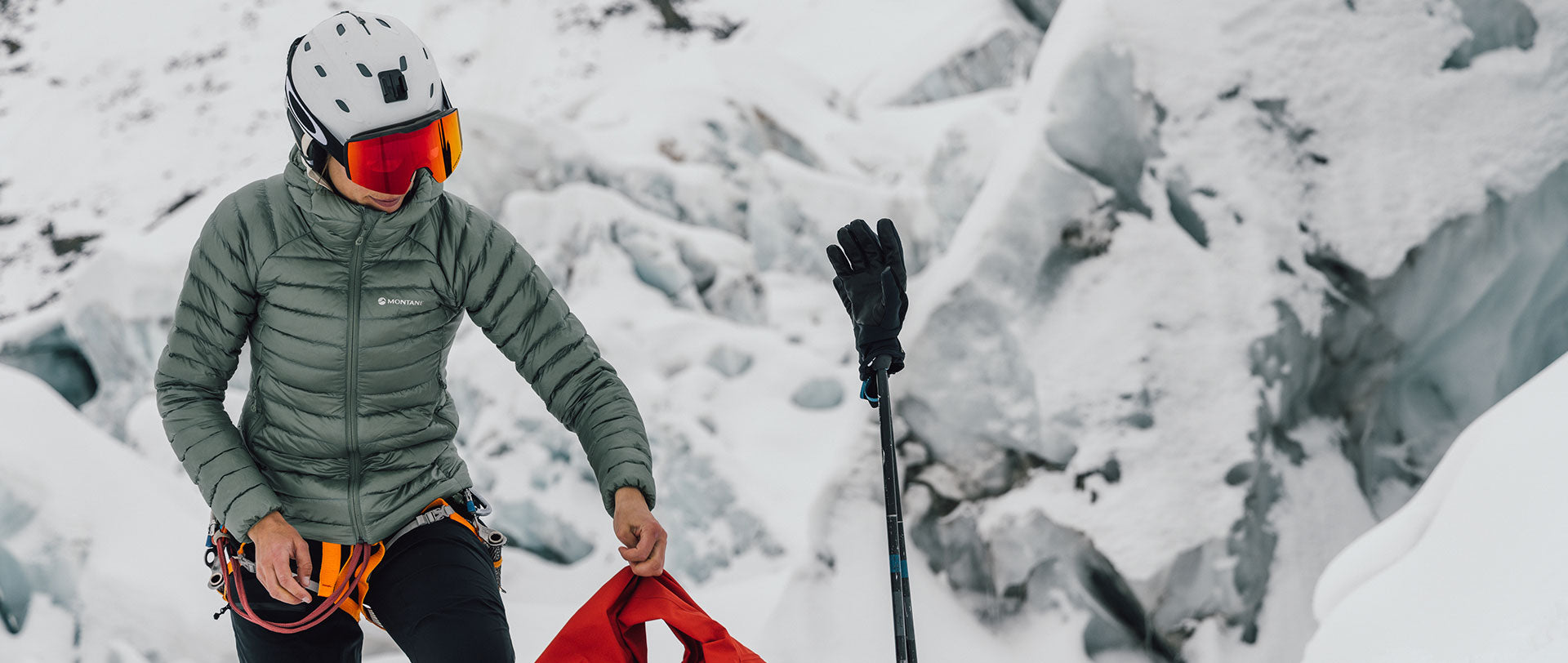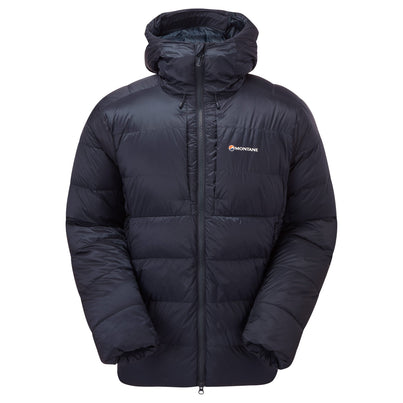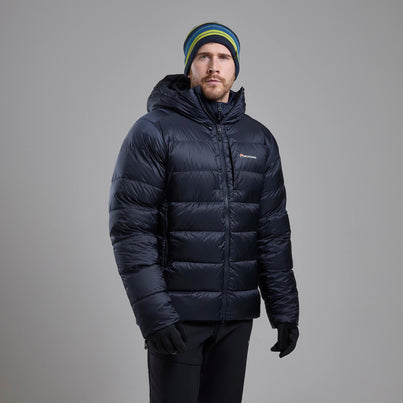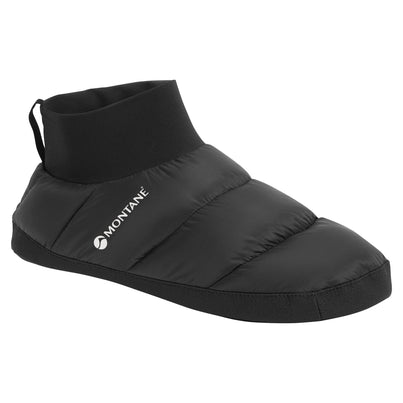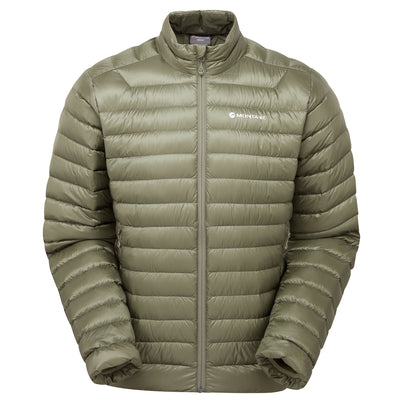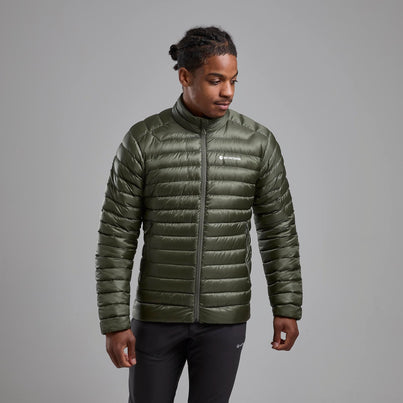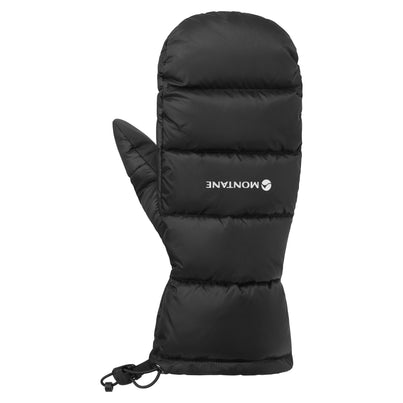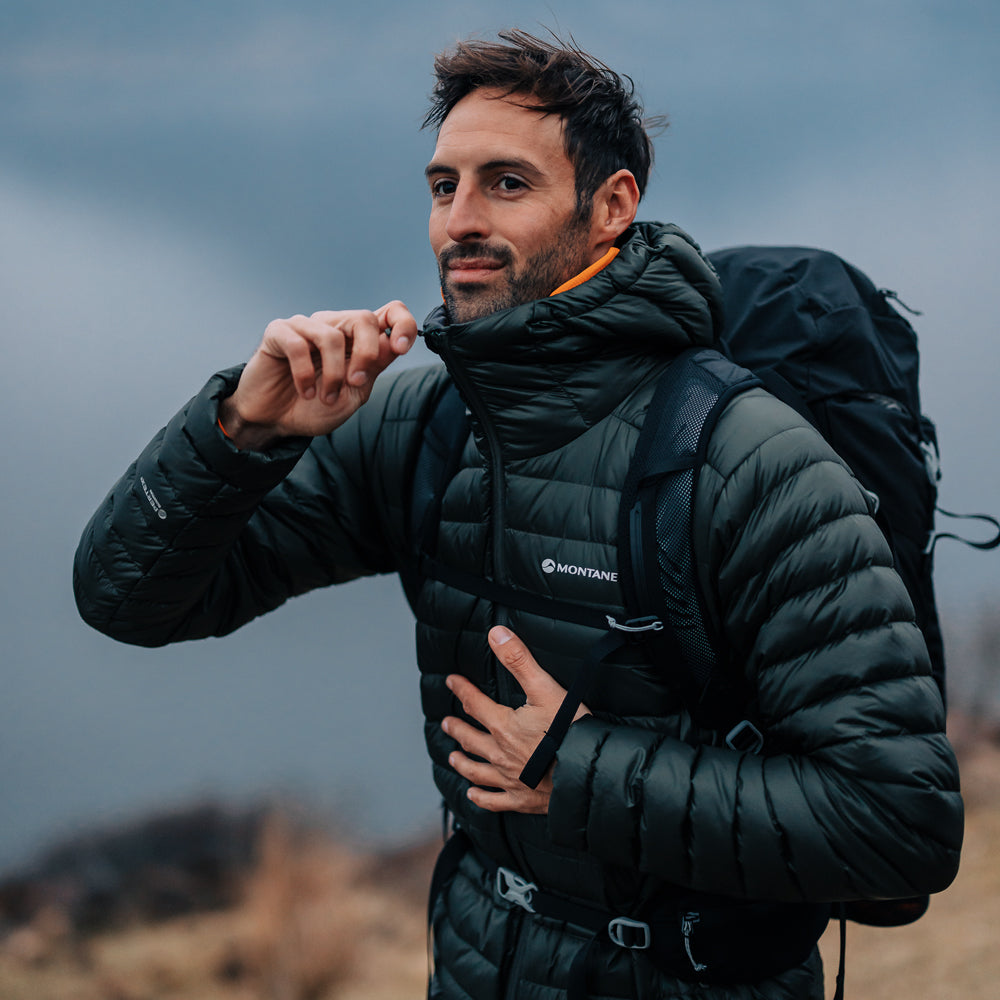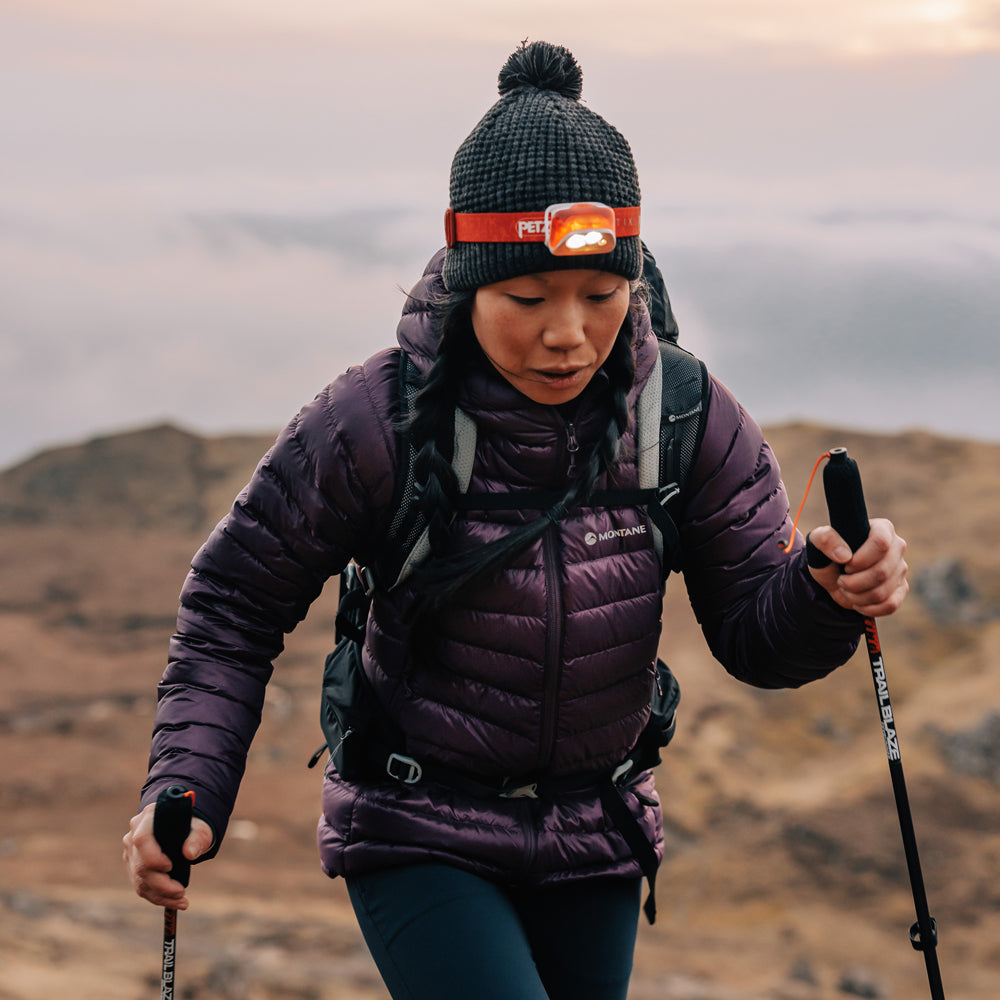There’s a reason down jackets are revered by arctic explorers and high-altitude mountaineers alike! Acting as an essential barrier from extremely cold environments, down jackets help to lock in heat and keep you warm on the move. Ultimately, explorers navigating these challenging landscapes rely on them for their safety and survival.
Whether you’re aspiring to take on your own arctic adventure, or you’re simply seeking a reliable winter jacket this season, we want you to know where our down comes from, so you can be confident it’s coming from responsible sources. As part of our ongoing journey toward being more transparent, we have 3rd party certification regarding the origin for all of the down Montane sources. This includes an annual audit to the Responsible Down Standard (for ourselves, the factories we work with, and our down supplier), ensuring we continuously adhere to the best standards possible.
Keep reading to find out more about some of the technical terms you’re going to encounter as you navigate the world of down jackets and accessories on our website (and beyond)…
“While down has been often imitated, it has been never been equaled. Down remains the most efficient insulator suitable for high-performance clothing applications. Exceptionally durable and resilient, it is by far the most packable insulation and provides the best warmth-to-weight characteristics of all. This is why it remains the number one choice for extremely cold environments.”
- Liam Steinbeck, Montane Materials Manager
Montane Down Insulation
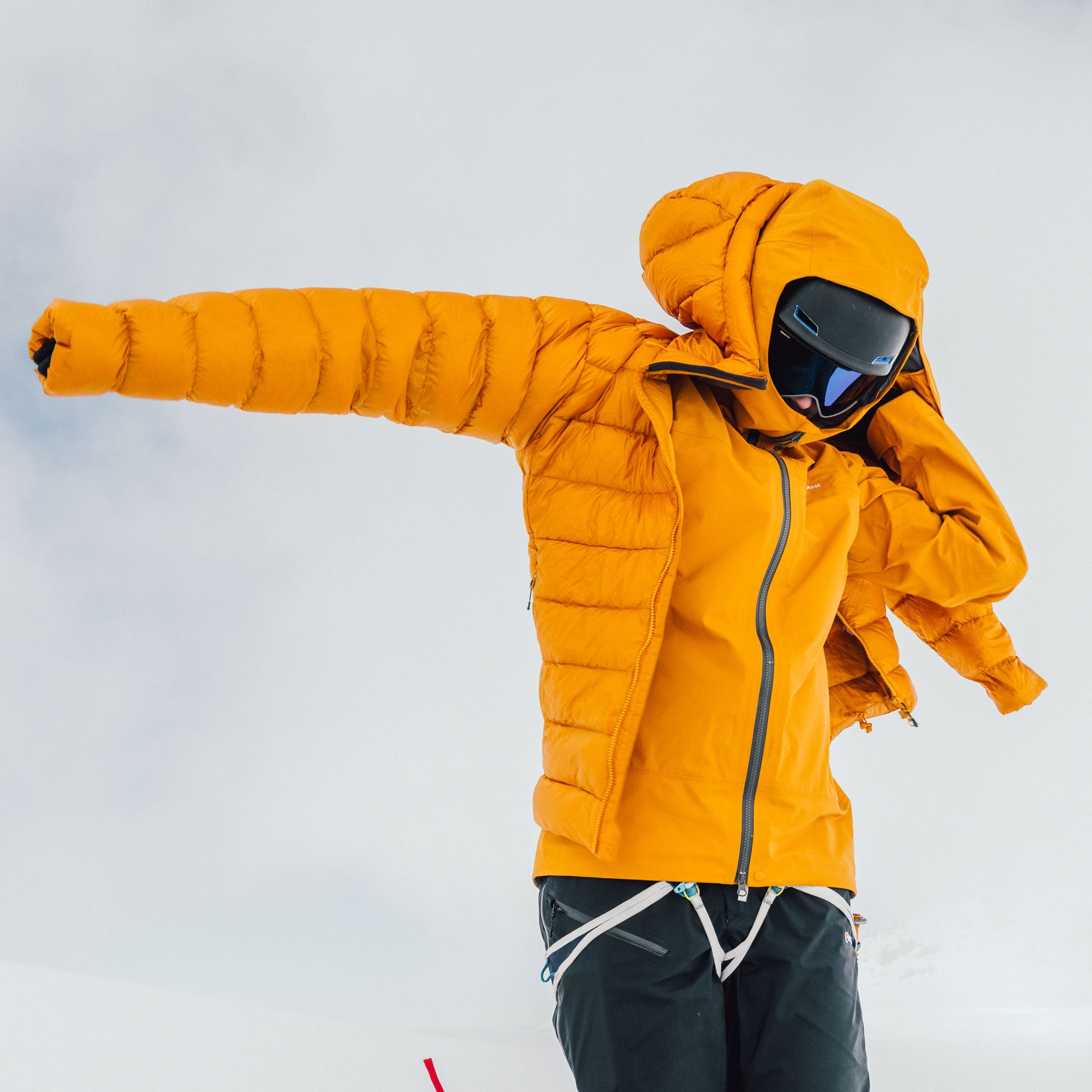
Where down comes from
First things first, down is a natural fiber found on the underbelly of waterfowl birds, most commonly ducks and geese (notably not chickens, or turkeys). It is made up of clusters, which provide insulation by trapping air, providing an optimal warmth-to-weight ratio that keeps the birds warm and protected. Often, brands offering down products will use a small blend of feather, known as the down-to-feather-ratio. All Montane virgin down is 90/10 - that is, 90% down and 10% feather. For example, see our Anti-Freeze Lite Hooded Down Jacket
. The down-to-feather-ratio of the recycled down we source is 85/15, which can be seen in our Tundra Down Jacket.
Significantly, down is a 100% by-product of the meat industry. Without being used for down products, it would ultimately be thrown away as waste (or ground into fertilizer). As a result, it is currently the most natural, sustainable, and effective insulator you can find on the planet. For those who feel strongly against the use of down, we also produce Synthetic Insulated Jackets for men and women
at Montane, which offer a good alternative to help keep you warm on the move.
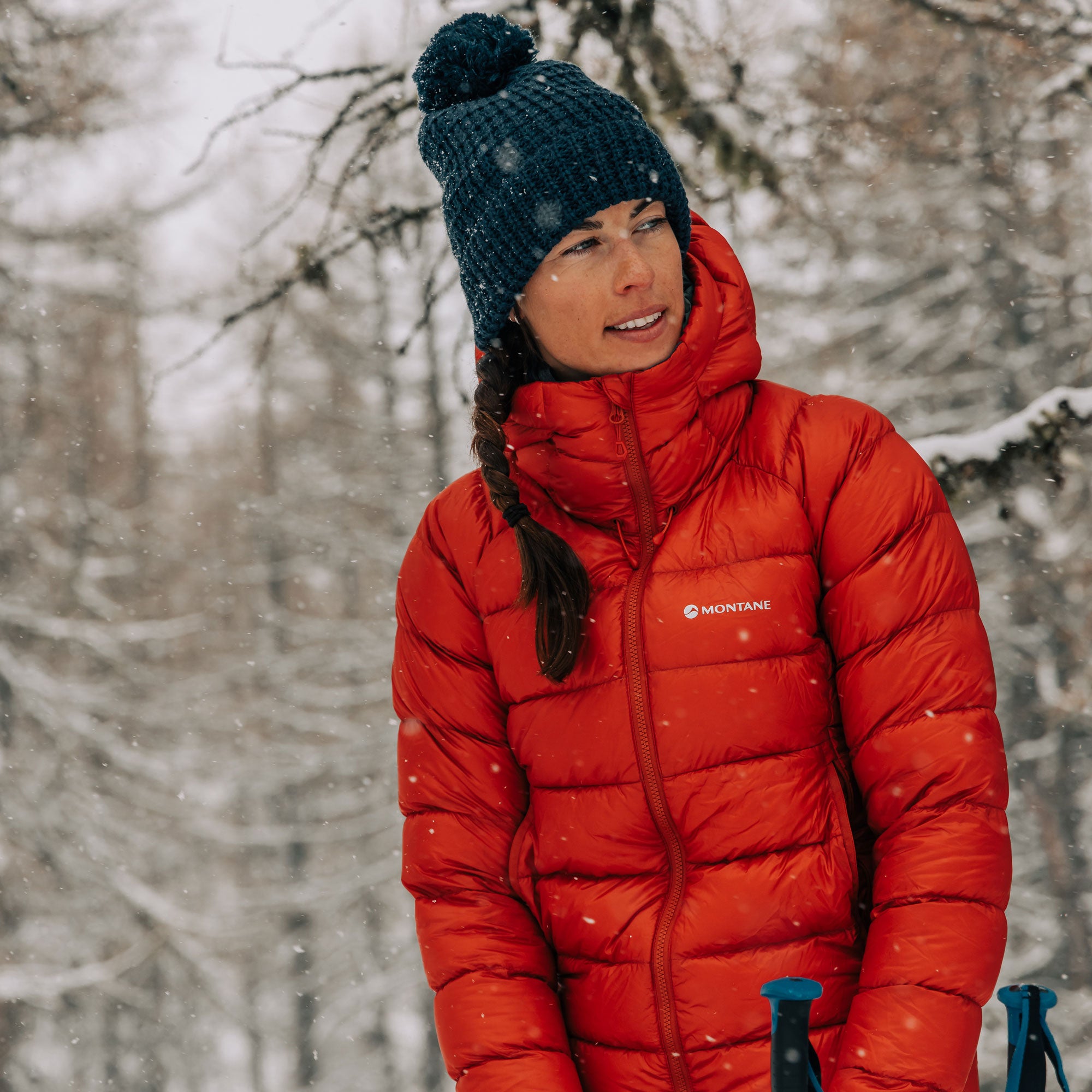
Duck VS Goose
As we’ve just discovered, the down we use in our Montane winter jackets come from either ducks or geese - but what exactly is the difference? Well, yields from ducks are roughly 25% of that from geese. However, there is a lot more duck down widely available than goose down (owing to higher consumption from humans).
Generally, goose down provides a higher fill power than duck down (more on that in a second!). However, research and extensive testing carried out by the IDFL
and Downlite
indicate there is not much difference at all between the quality of down produced by these waterfowl species. What they found was that the main difference in warmth is actually determined by the baffle width and amount of down used. That’s because larger channels (baffles) provide more space for the down clusters to maintain their structure (loft), and maximise their potential - in turn helping to keep you warmer.

What is Fill Power?
Fill power is important when it comes to thinking about down filling, as it’s one of the key characteristics that indicate the performance of the down (and in turn how warm it will keep you!). Fill power tests the volume in cubic inches that one ounce of down fills under pressure.
This measurement reveals how much loft and strength the down clusters have, and therefore how much air (or warmth) they can trap. A smaller down cluster will trap less air, and therefore have a lower fill power. Larger down clusters trap more air, and achieve a higher fill power. Where lower fill powered down is used, using more down can improve warmth, but will also increase weight (and cost). High fill powers achieve the greatest warmth with the lowest weight, but do cost more for this premium! As larger birds, geese produce larger down clusters, which typically provide a higher fill power than small duck down clusters.
While higher fill power down is theoretically possible, in reality it is next to impossible to achieve except under a strictly controlled dry laboratory environment. Higher fill powers struggle to fulfil their potential due to the weight of the fabric that envelopes them, by natural moisture vapor from the environment or even moisture evaporating from the person wearing the garment.
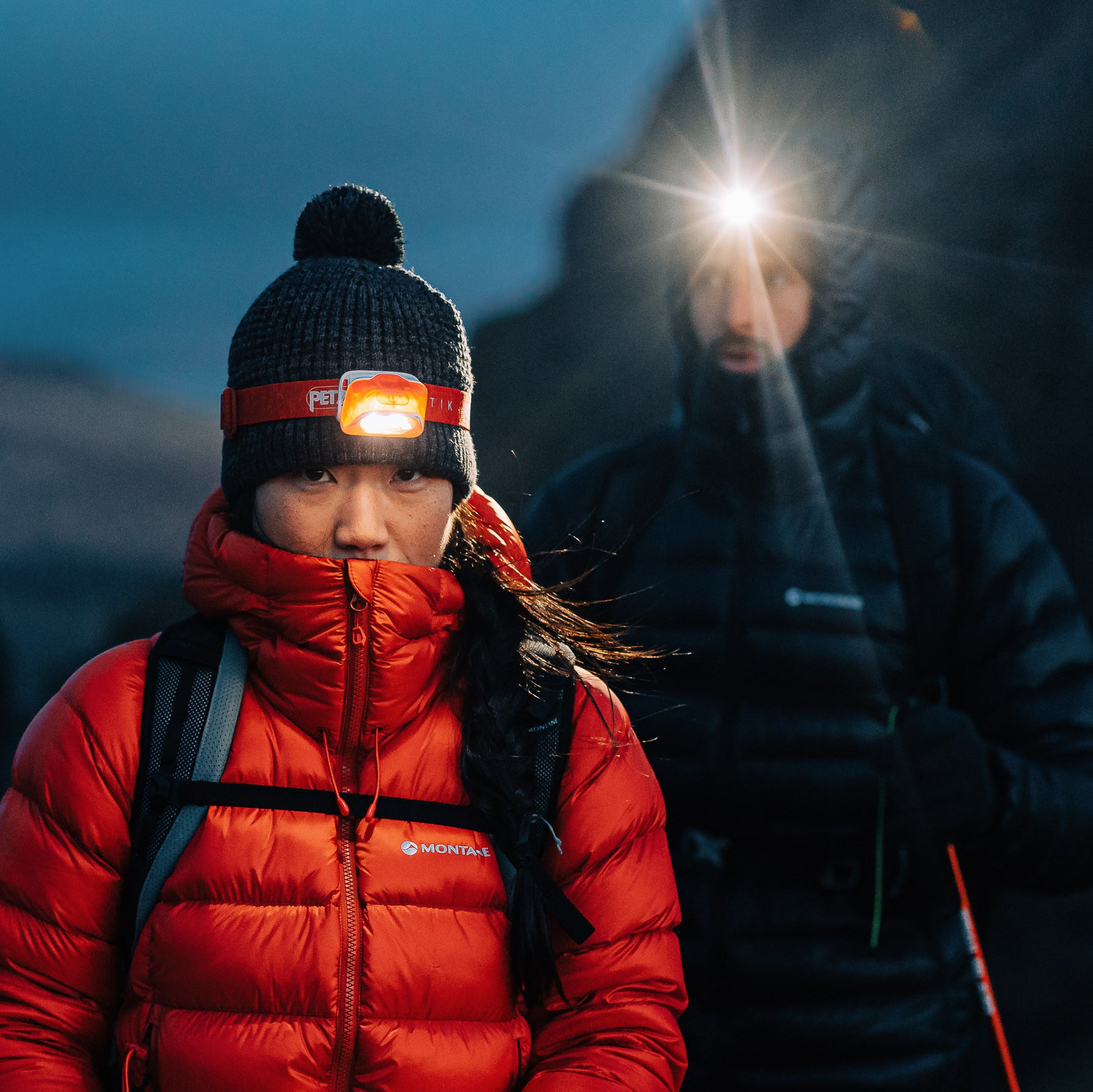
What is HyperDRY™?
Goose and duck down has an unbeatable warmth-to-weight ratio, however when it gets wet it loses its loft, and therefore its ability to trap air and keep you warm! This can be particularly troublesome for those navigating extremely cold and wet environments, where the performance of your kit is paramount.
To help counteract this, all Montane down is treated with HyperDRY™ - a water-resistant treatment that’s similar to a DWR (Durable Water Repellency), and is free from fluorocarbons. This helps the down to stay lofted for longer when exposed to changeable, wet elements. Ultimately, HyperDRY™ helps you stay warm and protected as you explore. However, when faced with wet conditions, we would recommend a waterproof jacket is worn to help further protect your down jacket!

Recycled Down
Recycled down is an alternative to virgin down, and has a lesser carbon footprint. Whilst it has been available for a long time, the recent surge in interest for more sustainable kit and recycled content, means there are now more schemes to collect and wash down. This in turn boosts its availability globally. Montane, therefore, introduced recycled down into our range for the first time in aw22, which can be found in our Tundra down jackets and gilets.
Recycled down comes from 2 avenues - first, as part of pre-consumer garments that haven’t made it to the market owing to technical faults or other issues. The majority of recycled down however comes from post-consumer use, collected from products such as sleeping bags and pillows, before the fill is extracted and processed (i.e. sterilised), so it can be used again.
For those who love a popping colour palette - recycled down is also, unfortunately, less suitable for bright-coloured jackets. This is due to a mix of white and grey down, which is visible through the fabric in light or bright colours. All down has some show through on very light colours, though this is less visible when virgin down is used because this can be bought in white or grey.
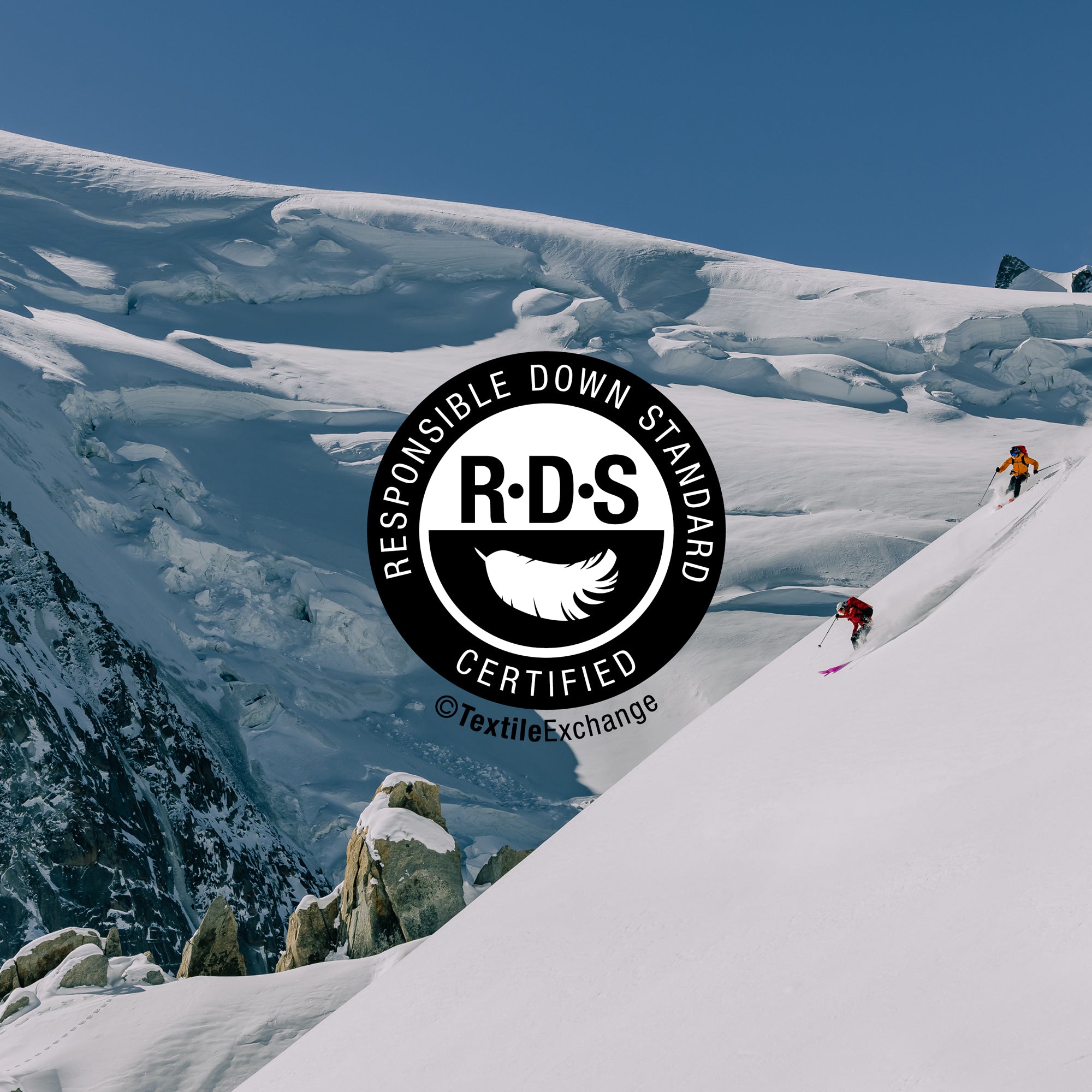
RDS Certified
The RDS (Responsible Down Standard) enables consumers to be confident in the conditions of where their down has been sourced from, regarding the welfare of the birds.
Significantly, all virgin down we use across our range is RDS certified. We choose to take this extra step to give us the confidence and peace of mind that we are providing the most responsible options for our kit. You can learn more about the Responsible Down Standard on their dedicated website.
As the origin of recycled down is unknown, it is not possible to gain this level of knowledge about welfare. This is why recycled down cannot be certified to the RDS.
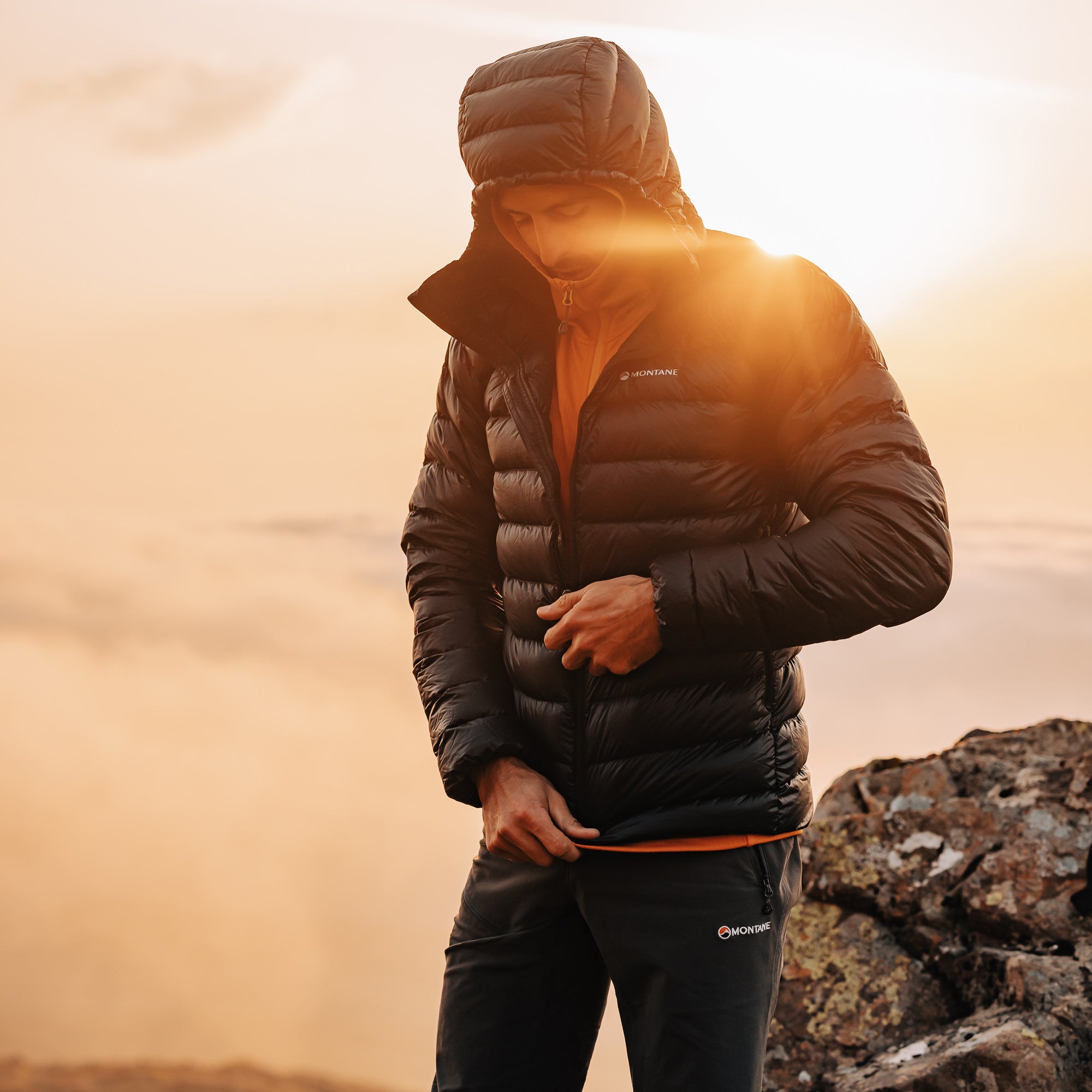
TrackMyDown
All of the down that Montane sources, whether it is RDS certified or recycled, comes from one supplier - Allied Feather and Down - who we have worked with for many years. It is also all assigned a lot number, which is printed on the hangtags of Montane down products.
By entering the lot number to www.trackmydown.com, you can learn in detail about the actual fill used in your individual product. This transparency platform is known as TrackMyDown, and was developed by Allied Feather and Down.







